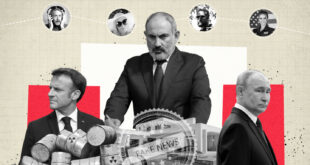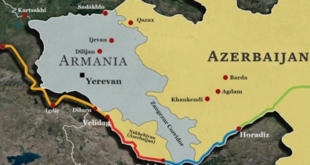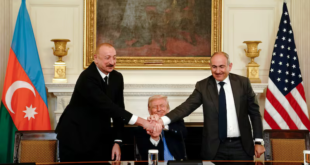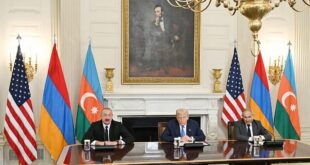Even though Vladimir Putin’s designated successor says few senior officials even know what demography is, changes in the number of 18-year-olds over the next few years will impose severe constraints on the Russian government and may force it to reduce the size of its armed forces.According to an article in the latest Nezavizimoye voennoye obozreniye, declines in the size of the draft-age cohort are so large that Moscow will have to increase the share of that group drafted, take in more older men, or increase the length of military obligation to 18 months if it wants to maintain the current size of its army –1,131,000.
But each of these options would create serious difficulties not only for the Kremlin but for the country’s economy, Vladimir Yevleyev, a senior researcher at the Moscow Institute of International Economics and International Relations (IMEMO), argues, and consequently, the government may have to cut the size of the draft and hence of the military.
Given that Russia has the fourth largest military in the world and that all three country’s that have larger armed services — the U.S., China, and India — have significantly larger populations, this scholar argues, such cuts would seem the government’s most reasonable choice (http://nvo.ng.ru/forces/2007-12-14/1_prizyv.html).
Dmitriy Medvedev, Putin’s choice to be the next president, said that nine out of ten ministers do not even know what demography is, a striking comment given both the amount of time Putin has spent talking about it and the impact population changes are already having on the government (http://www.izvestia.ru/Russia/article3111233/?print).
If many government ministers in the Russian Federation do not pay much attention to demographic issues, Russia’s military commanders have been focusing on their implications for country’s national defense posture for some time and will, Yevleyev suggests, have to do so even more over the next several years.
Until very recently, the IMEMO scholar says, the number of young men reaching the prime draft age of 18 has not been fewer than one million, of whom approximately 20 percent have been drafted with the remainder receiving deferments or exemptions of one kind or another.
But because some of those receiving deferments have been drafted at slightly older ages, the percentage of men called to the colors has been about 30 percent of the draft-age cohort during the period 1996-2004. Because more than two out of three men never served, the impact of the draft on the economy was relatively small.
In the last several years, the number of Russian men reaching the age of 18 has declined and will decline even more over the next few years. (Because these people have already been born, the figures Yevleyev gives are not projections but a count of currently existing people.
Next year, he reports, the number of 18 year olds will fall to 935,000, and in the out years, it will decline even more. Consequently, if the military is to remain at its current size, a greater percentage of this age group will have to serve with the obvious economic and political consequences.
The Russian government has already begun to address this problem. It has reduced the number of reasons for deferment and as of January, it will significantly reduce the number of draftees sent to the internal forces of the Interior Ministry and end the use of draftees in the FSB’s border guards.
The cutback in the number of reasons for deferment, Yevleyev calculates, will increase the draft pool by approximately 90,000 men next year, but this increase will decline thereafter to 81,000 in 2009, and 72,000 in 2010.
And the reduction or end of use of draftees outside the military will boost the number of men available for service in the armed forces by 100,000 next year and thereafter as well, the MGIMO scholar concludes.
But even with these changes, the pool from which the military can draw draftees — after all deferments are taken into account will fall from 464,000 in 2008 to only 388,000 in 2010. And those numbers put the service in a real bind, one that commanders and their political masters will have to address.
One solution would be to increase the percentage of the total 18-year-old cohort serving, something that would likely have a negative impact on educational attainment, the economy, and on the country’s birthrate, because soldiers would be marrying and having children significantly later.
Another would be to take in more older men, but that too would have not only the same negative consequences as taking in a greater share of 18 year olds but would likely lead to more political problems because these older people would see their lives either as students or as beginning employees disrupted.
And consequently, Yevleyev says, the Russian government is left with two other options, each of which entails some serious political risks and problems. It could increase the length of service to 18 months, something that would be extremely unpopular among potential soldiers and their parents.
Or it could reduce the size of the military and thus its needs for more men. Yevleyev clearly sees this as the best way out, but taking that step would be resented by commanders and could make it more difficult for Moscow to control the country or project power in neighboring states.
It is worth noting that Yevleyev does not even mention another demographic trend that is affecting the Russian military — the ever increasing share of the draft pool consisting of men from traditional Islamic nationalities, a group many ethnic Russian officers find it difficult to manage.
Consequently, while many Russian ministers may be as oblivious to demographic trends as Medvedev says, the defense minister is certainly not among them. And the problems demography is creating for his area of responsibility will soon be assuming an equally large role for other ministries as well.
Paul Goble
Â
Source: Window on Eurasia
 Eurasia Press & News
Eurasia Press & News



